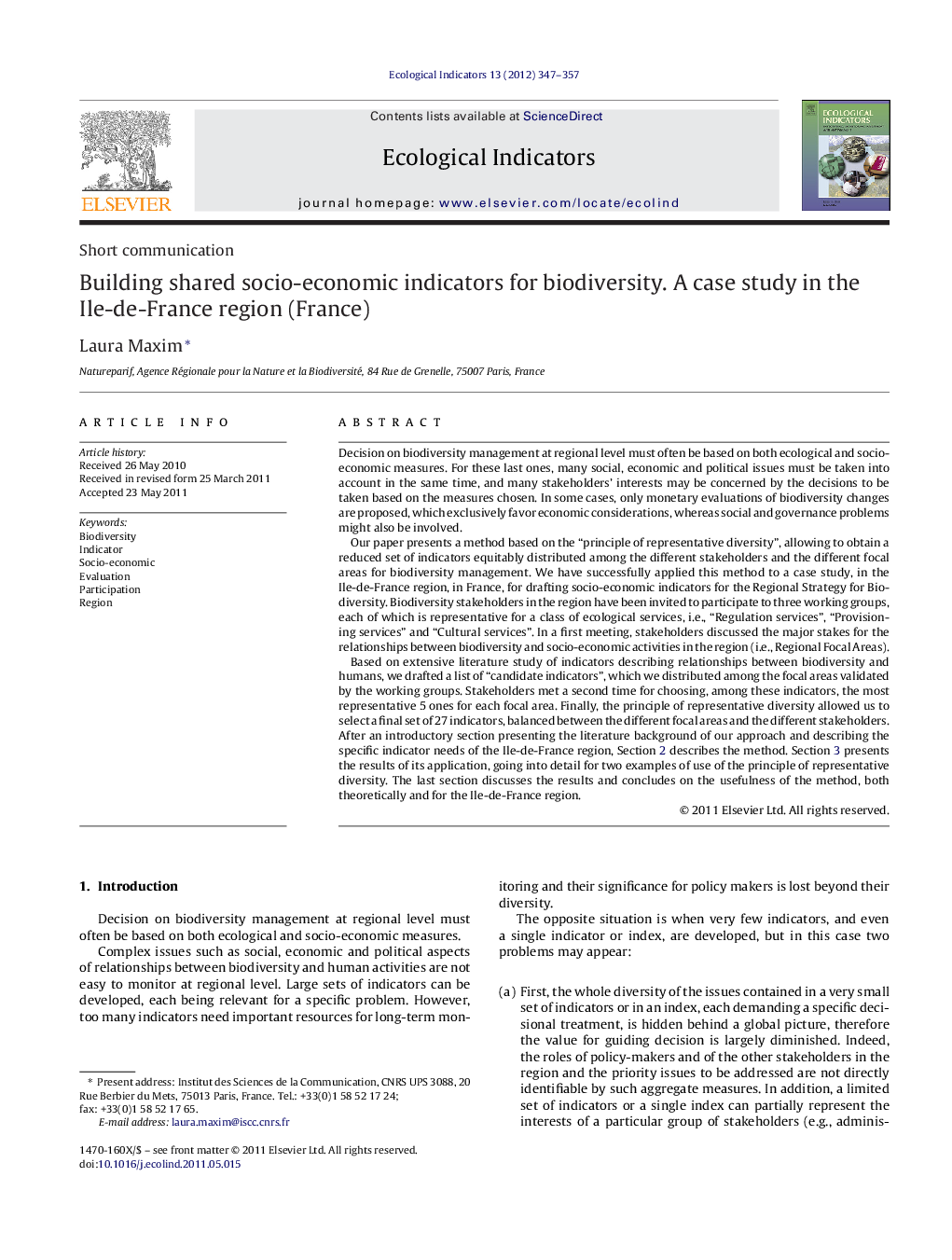| کد مقاله | کد نشریه | سال انتشار | مقاله انگلیسی | نسخه تمام متن |
|---|---|---|---|---|
| 4374031 | 1303160 | 2012 | 11 صفحه PDF | دانلود رایگان |

Decision on biodiversity management at regional level must often be based on both ecological and socio-economic measures. For these last ones, many social, economic and political issues must be taken into account in the same time, and many stakeholders’ interests may be concerned by the decisions to be taken based on the measures chosen. In some cases, only monetary evaluations of biodiversity changes are proposed, which exclusively favor economic considerations, whereas social and governance problems might also be involved.Our paper presents a method based on the “principle of representative diversity”, allowing to obtain a reduced set of indicators equitably distributed among the different stakeholders and the different focal areas for biodiversity management. We have successfully applied this method to a case study, in the Ile-de-France region, in France, for drafting socio-economic indicators for the Regional Strategy for Biodiversity. Biodiversity stakeholders in the region have been invited to participate to three working groups, each of which is representative for a class of ecological services, i.e., “Regulation services”, “Provisioning services” and “Cultural services”. In a first meeting, stakeholders discussed the major stakes for the relationships between biodiversity and socio-economic activities in the region (i.e., Regional Focal Areas).Based on extensive literature study of indicators describing relationships between biodiversity and humans, we drafted a list of “candidate indicators”, which we distributed among the focal areas validated by the working groups. Stakeholders met a second time for choosing, among these indicators, the most representative 5 ones for each focal area. Finally, the principle of representative diversity allowed us to select a final set of 27 indicators, balanced between the different focal areas and the different stakeholders. After an introductory section presenting the literature background of our approach and describing the specific indicator needs of the Ile-de-France region, Section 2 describes the method. Section 3 presents the results of its application, going into detail for two examples of use of the principle of representative diversity. The last section discusses the results and concludes on the usefulness of the method, both theoretically and for the Ile-de-France region.
► We propose a method for developing socio-economic indicators of biodiversity.
► We have tested the method for the Ile-de-France region (France).
► Our method provides indicators representative of all stakeholders and decision stakes.
► Our method is feasible at regional scale for addressing biodiversity governance.
Journal: Ecological Indicators - Volume 13, Issue 1, February 2012, Pages 347–357